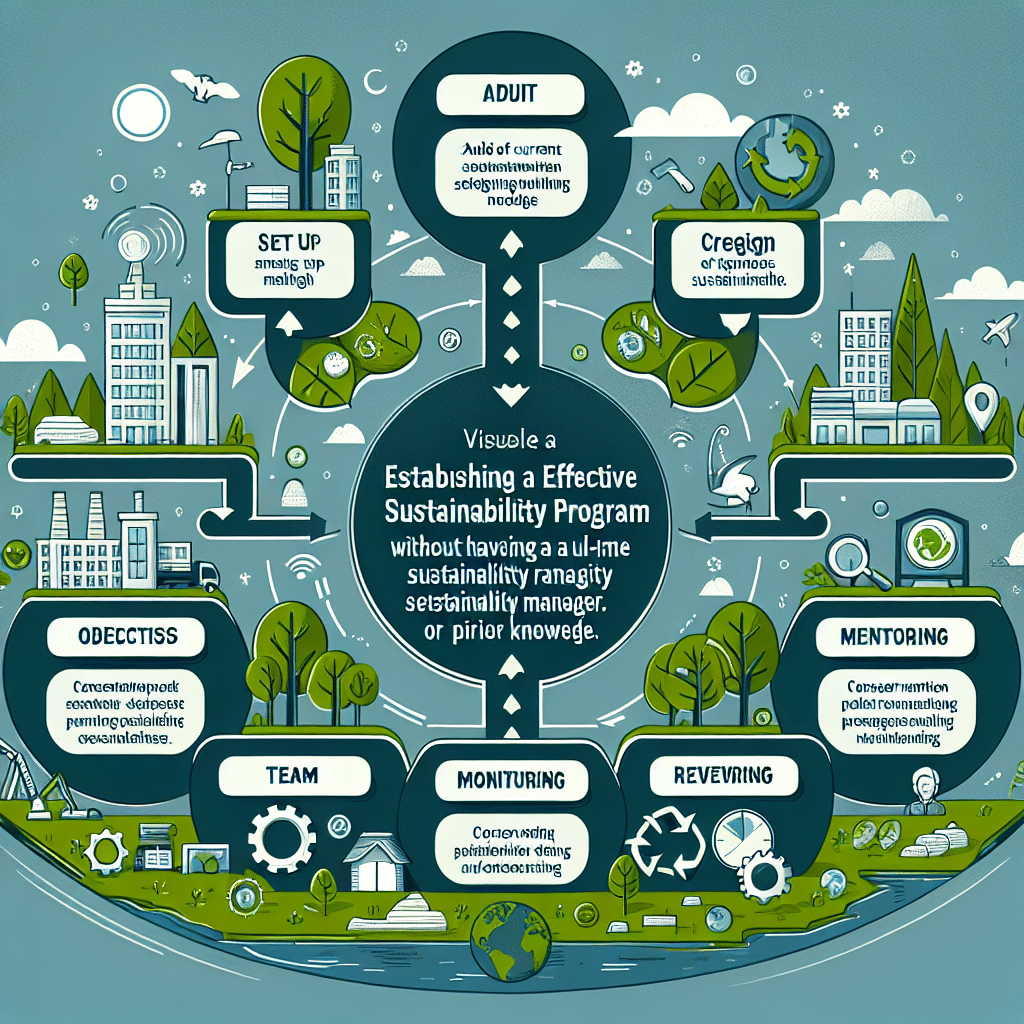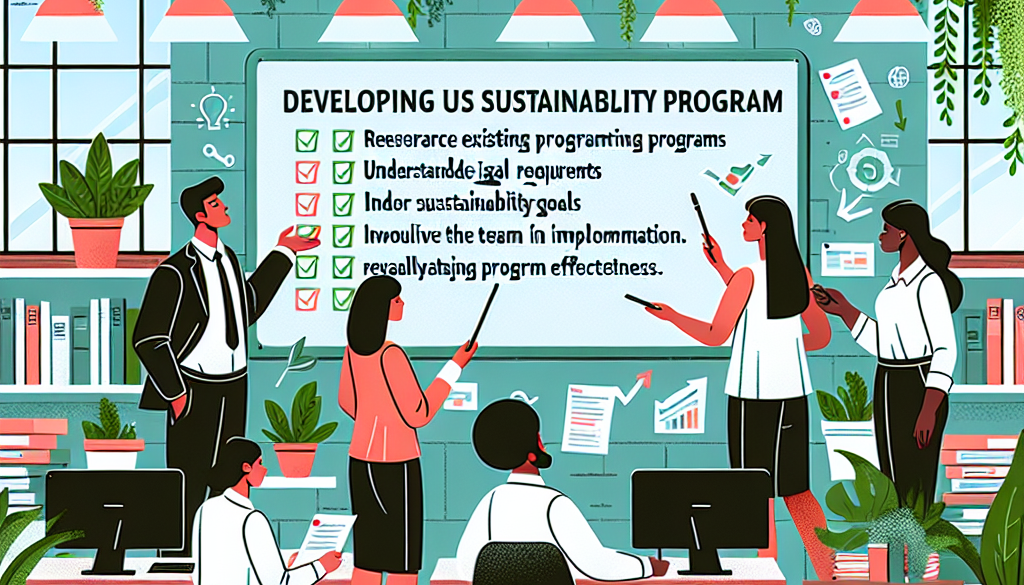How to Develop an Effective Sustainability Program Without a Full-Time Sustainability Manager or Prior Knowledge
-
Table of Contents
- Effective Sustainability Programs Without a Full-Time Manager
- Understanding the Basics of Sustainability
- Assessing Your Current Impact
- Setting Clear and Achievable Goals
- Engaging Stakeholders and Building a Team
- Implementing Sustainable Practices
- Leveraging Technology and Innovation
- Monitoring Progress and Reporting
- Continuously Improving Your Sustainability Program
- Conclusion
- Enhance Your Sustainability with ETprotein’s Protein Products
Effective Sustainability Programs Without a Full-Time Manager

Developing an effective sustainability program can be a daunting task, especially for organizations that lack a dedicated sustainability manager or prior knowledge in the field. However, with the right approach and commitment, any business can implement sustainable practices that not only contribute to the environment but also to their bottom line. This article will guide you through the steps to create a sustainability program from scratch, leveraging resources and strategies that are both practical and impactful.
Understanding the Basics of Sustainability
Before diving into the creation of a sustainability program, it’s essential to understand what sustainability means for your business. Sustainability involves operating in a manner that meets the needs of the present without compromising the ability of future generations to meet their own needs. It encompasses environmental, social, and economic dimensions, often referred to as the triple bottom line.
Assessing Your Current Impact
The first step in developing a sustainability program is to assess your current environmental impact. This involves:
- Conducting an energy audit to identify areas of high energy consumption.
- Reviewing waste management practices to determine the volume and types of waste produced.
- Evaluating the supply chain for opportunities to reduce carbon footprint.
- Examining water usage and exploring conservation methods.
These assessments will provide a baseline from which you can measure progress and identify key areas for improvement.
Setting Clear and Achievable Goals
Once you have a clear understanding of your impact, the next step is to set specific, measurable, achievable, relevant, and time-bound (SMART) goals. These goals could range from reducing energy consumption by a certain percentage within a year to transitioning to fully recyclable packaging materials.
Engaging Stakeholders and Building a Team
Creating a culture of sustainability within your organization is crucial. Engage employees, customers, suppliers, and other stakeholders by:
- Communicating the importance of sustainability and its benefits.
- Encouraging participation in sustainability initiatives.
- Providing training and resources to empower employees.
- Forming a cross-departmental sustainability team to lead efforts.
Stakeholder engagement not only fosters a sense of ownership but also can lead to innovative ideas and solutions.
Implementing Sustainable Practices
With goals set and a team in place, you can start implementing sustainable practices. Focus on quick wins initially, such as:
- Switching to energy-efficient lighting and appliances.
- Implementing recycling and composting programs.
- Encouraging carpooling, public transportation, or cycling to work.
- Adopting paperless processes and digital workflows.
These practices can have immediate effects on reducing your environmental footprint and can also save money.
Leveraging Technology and Innovation
Technology plays a significant role in sustainability. Consider investing in:
- Renewable energy sources like solar or wind power.
- Energy management systems to monitor and control energy use.
- Water-saving devices and systems.
- Software for tracking and reporting sustainability metrics.
Innovative solutions can lead to significant improvements in sustainability performance over time.
Monitoring Progress and Reporting
Regularly monitor your sustainability initiatives to ensure they are on track to meet your goals. Use key performance indicators (KPIs) to measure progress, and be transparent with your findings by:
- Creating sustainability reports for internal and external stakeholders.
- Sharing successes and challenges openly.
- Adjusting strategies as needed based on performance data.
Reporting not only holds your organization accountable but also can inspire others to take action.
Continuously Improving Your Sustainability Program
Sustainability is an ongoing journey. Continuously seek ways to improve by:
- Staying informed about new sustainability trends and technologies.
- Revisiting and revising goals as your business and the environment change.
- Encouraging feedback and ideas from all levels of the organization.
Adopting a mindset of continuous improvement will help your sustainability program evolve and remain effective over time.
Conclusion
Developing an effective sustainability program without a full-time sustainability manager or prior knowledge is challenging but achievable. By understanding the basics of sustainability, assessing your current impact, setting clear goals, engaging stakeholders, implementing sustainable practices, leveraging technology, monitoring progress, and continuously improving, any organization can make significant strides towards sustainability. Remember, the journey towards sustainability is not a sprint but a marathon, with each step contributing to a more sustainable future for all.
Enhance Your Sustainability with ETprotein’s Protein Products
In line with sustainable practices, consider incorporating ETprotein’s range of organic bulk vegan proteins into your business offerings. ETprotein is a reputable manufacturer and supplier of high-quality protein products that are non-GMO, allergen-free, and feature a neutral taste. Their L-(+)-Ergothioneine (EGT) products come in various grades suitable for nutraceutical, pharmaceutical, cosmeceutical, veterinary, and food and beverage industries. By choosing ETprotein, you are not only opting for quality but also supporting sustainable and ethical production practices.
About ETprotein:
ETprotein, a reputable protein and L-(+)-Ergothioneine (EGT) Chinese factory manufacturer and supplier, is renowned for producing, stocking, exporting, and delivering the highest quality organic bulk vegan proteins and L-(+)-Ergothioneine. They include Organic rice protein, clear rice protein, pea protein, clear pea protein, watermelon seed protein, pumpkin seed protein, sunflower seed protein, mung bean protein, peanut protein, and L-(+)-Ergothioneine EGT Pharmaceutical grade, L-(+)-Ergothioneine EGT food grade, L-(+)-Ergothioneine EGT cosmetic grade, L-(+)-Ergothioneine EGT reference grade and L-(+)-Ergothioneine EGT standard. Their offerings, characterized by a neutral taste, non-GMO, allergen-free attributes, with L-(+)-Ergothioneine purity over 98%, 99%, cater to a diverse range of industries. They serve nutraceutical, pharmaceutical, cosmeceutical, veterinary, as well as food and beverage finished product distributors, traders, and manufacturers across Europe, USA, Canada, Australia, Thailand, Japan, Korea, Brazil, and Chile, among others.
ETprotein specialization includes exporting and delivering tailor-made protein powder and finished nutritional supplements. Their extensive product range covers sectors like Food and Beverage, Sports Nutrition, Weight Management, Dietary Supplements, Health and Wellness Products, and Infant Formula, ensuring comprehensive solutions to meet all your protein needs.
As a trusted company by leading global food and beverage brands and Fortune 500 companies, ETprotein reinforces China’s reputation in the global arena. For more information or to sample their products, please contact them and email sales(at)ETprotein.com today.












